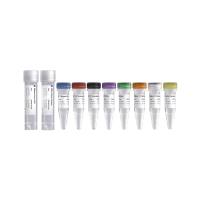Recent Advances in Hematopoietic Stem Cell Transplantation and Perspectives of RNAi Applications
互联网
互联网
相关产品推荐

Recombinant-Cat-Kit-ligandKITLGKit ligand Alternative name(s): Mast cell growth factor; MGF Stem cell factor; SCF c-Kit ligand Cleaved into the following chain: 1. Soluble KIT ligand; 2. sKITLG
¥10990

T7 RNAi Transcription Kit(T7RNAi逆转录试剂盒)( TR102)
¥1350

Recombinant-Rat-Kit-ligandKitlgKit ligand Alternative name(s): Hematopoietic growth factor KL Mast cell growth factor; MGF Stem cell factor; SCF c-Kit ligand Cleaved into the following chain: 1. Soluble KIT ligand; 2. sKITLG
¥10990

Recombinant-Sheep-Kit-ligandKITLGKit ligand Alternative name(s): Mast cell growth factor; MGF Stem cell factor; SCF c-Kit ligand Cleaved into the following chain: 1. Soluble KIT ligand; 2. sKITLG
¥10934

LY6E/LY6E蛋白Recombinant Human Lymphocyte antigen 6E (LY6E)重组蛋白Retinoic acid-induced gene E protein;RIG-E;Stem cell antigen 2;SCA-2蛋白
¥2376
相关问答

